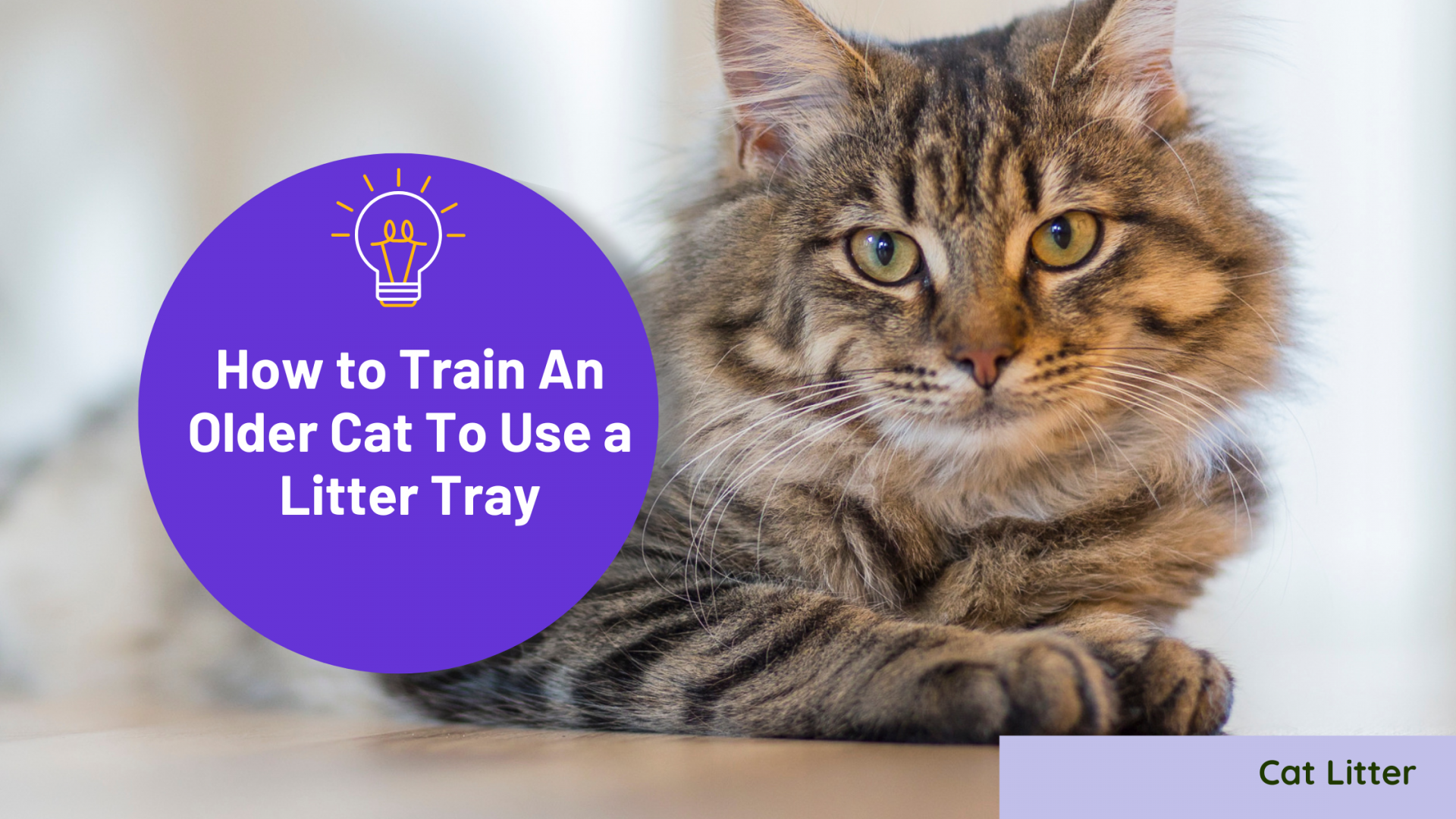You may have heard the saying that you can’t teach an old dog new tricks, but is the same true for your feline family member?
A litter box is one of the best ways to promote hygiene in your home, both for your cat and for your family members, but older pets who are already accustomed to their habits may have a harder time adjusting.
However, the good news is that it’s not impossible to teach an older cat to use a litter tray. We have some proven tips you can use.
Also read: Why Is My Cat Eating Litter? (and How To Stop It)
What to Do When Bringing an Older Cat Home
Older cats are often left at shelters, so choosing to bring one home can be incredibly rewarding. However, it’s going to take some patience and adjustment for everyone involved.
If you bring an older outdoor cat home with you, they’re very used to digging holes and doing their business outside. However, having an indoor litter box can be beneficial if they don’t want to go outside due to the weather or illness.
When you first bring an older cat home, it’s best to confine them to the house until they get used to their surroundings. Give them a chance to make this new space their own. It also helps to provide them with plenty of attention – bonding with your new cat will make this transition easier.
Keeping your new elderly cat inside for the first few weeks is especially important if they require daily medication.
Another way that you can help them adjust and not want to run away is by providing them with mental stimulation and plenty of spots to play and hide. This is also one of the best times to start introducing a litter box.
Tips on How to Train an Older Cat to Use a Litter Box
Here are some tips you can apply to encourage your older cat to start using a litter box.
Pick the Right Location
The first step is to ensure your cat knows the litter box is there. It’s also important to pick the right spot.
Older cats tend to be calmer and quieter and would prefer to do their business in a similar space. Avoid any areas where family members are constantly walking or spend a lot of time.
You also want to keep the litter tray away from their food and water. You wouldn’t want to use the bathroom close to your food and your cat doesn’t want to either. However, you could place some of their favorite toys near it to give the area a sense of familiarity.
To further help your older cat adjust to the idea of using a litter box, you may also want to use more than one in different areas of your home. This is especially true if you have more than one floor in your home.
What’s important is that you don’t move the litter box around too much. This will create confusion and discourage use.
Think Carefully About the Type of Box and Litter You Use
When it comes to older cats, a litter tray is best. A covered box won’t allow them to ‘detect threats’, which is what they would do outside, so it can discourage them from using it. What’s more, a tray will be easier for your elderly cat to climb in and out of.
It also helps to pick a larger tray as this will give your kitty more room and make the litter box feel more like an outdoor area.
In terms of litter, this might take some trial and error, but it’s best to start off with a clumping litter that has a natural texture. Unscented cat litter is also best. Wood shavings, corn, and even sand are all options.
Make the Introduction Easy
When introducing your older cat to a litter tray, you may want to confine them to a smaller area of the house and place the litter tray there. Once they get the idea that they need to use it to do their business, you can allow them to explore more of your home.
It can also be beneficial to have your cat around during the setup. Cats are naturally curious, so allow them to sniff the litter and dig around a bit as you set things up. You can even pick them up and place them in the litter tray to get them started.
Anytime your cat successfully uses the litter tray, give them some calm, positive praise – tricks can also make a difference.
It’s best not to scold your cat during this transition period as it can make things that much harder and could even end up creating negative connotations with the litter tray.
Keep Things Clean
Cats love cleanliness, so keeping their litter tray and the area around it tidy can make this a space they want to spend time in.
Make sure you’re scoping the litter box every day or two to make it that much easier for your elderly cat to do what they need to. Just don’t replace all the litter too soon or it could remove the smells you want them to get familiar with.
Once they start getting used to the litter tray, make sure you’re doing a thorough clean at least once a month to avoid mold growth and other harmful bacteria from building up.
When Is It Too Late to Litter Train a Cat?
Even though it’s always going to be easier to litter train a cat from a younger age, training an older cat is not impossible.
There is no time limit on when you can teach a cat to use a litter box. However, older cats generally require a little more guidance and patience during this process. Trust us, it will be worth it.
Final Thoughts
Teaching your old cat new tricks is possible, provided you take the time to get the setup right, find a litter they love, and are prepared to practice some love and patience.
If your cat still won’t use a litter box after weeks of trying, you may need to let them stick to their outdoor habits and simply monitor them a little more closely.


 0 comments
0 comments Copy link
Copy link Share on Twitter
Share on Twitter Share on Facebook
Share on Facebook Share on WhatsApp
Share on WhatsApp
Comments(0)